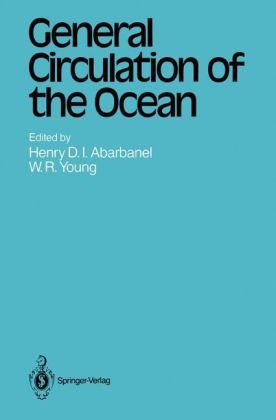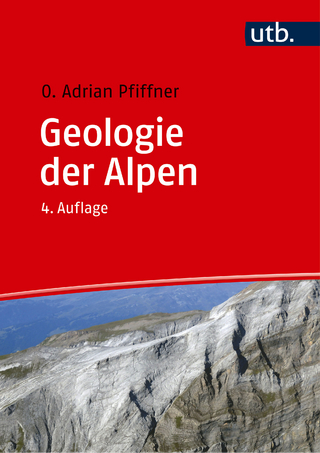
General Circulation of the Ocean
Springer-Verlag New York Inc.
978-0-387-96354-9 (ISBN)
- Titel ist leider vergriffen;
keine Neuauflage - Artikel merken
Planning for all the named enterprises depended, as they still do, of course, on the ability to predict with some certainty this class of phenomena. That ability, as with most physical sci- ence, is predicated on a firm basis of observational fact to establish what, amorig the myriad of mathematical possibilities, is chosen by Nature as her expression of fact.
The Observational Basis for Large Scale Circulation.- 1. Introduction.- 2. Surface Circulation.- 3. The Subtropical Gyres and Western Boundary Currents.- 4. Deep Circulation.- Thermocline Theories.- 1. Introduction.- 2. Formulation.- 2.1 The Equations of Motion.- 3. Conservation Principles.- 4. Scaling and the Governing Partial Differential Equation.- 5. The Search for Similarity Solutions.- 6. Ideal Fluid Solutions of Welander.- 7. Layered Models.- Inverse Methods for Ocean Circulation.- 1. Introduction.- 2. The Physical Problem.- 3. Treatment of the Data.- 3.1 Interpolation.- 3.2 Data Noise.- 3.3 Choice of Layers.- 3.4 Extrapolation.- 4. An Empirical Search.- 5. The Inverse Problem.- 5.1 Noise-Free Data; the SVD Solution.- 5.2 Representation and Resolution.- 5.3 Weighting.- 5.4 A Special Inverse for Noisy Data.- 5.5 Two Types of Correction.- 6. Results of Inverse Calculations.- 6.1 A Step Beyond the Inverse Calculation.- 7. Concluding Remarks.- Baroclinic Theories of the Wind Driven Circulation.- Abstract.- 1. Scale Analysis of the Equations of Motion.- 1.1 The Rossby Number.- 1.2 The Size of Vertical Velocities.- 1.3 The Consequences of Small Vertical Velocities.- 1.4 The Taylor-Proudman Theorem.- 2. The Two Layer Model.- 2.1 The Equations of Motion.- 2.1.1 The vertical momentum balance.- 2.1.2 The horizontal momentum balance.- 2.1.3 Mass conservation.- 2.2 Conservation of Potential Vorticity.- 2.2.1 Derivation of potential vorticity conservation.- 2.2.2 The relationship between potential vorticity and angular momentum.- 2.3 Quasigeostrophic Potential Vorticity Conservation.- 2.3.1 The approximations leading to quasigeostrophy.- 2.3.2 Derivation of the quasigeostrophic equations.- 2.3.3 Linear Rossby waves.- 2.4 Planetary Geostrophic Potential Vorticity Conservations.- 2.4.1 Simplification of the dynamics on large length scales.- 2.4.2 Nonlinear steepening of the baroclinic Rossby wave.- 2.4.3 Filtering of the barotropic Rossby wave.- 3. The Geometry of Geostrophic Contours.- 3.1 The Concept of a Geostrophic Contour.- 3.1.1 Definition of a geostrophic contour.- 3.2 A Topographic Problem.- 3.2.1 Potential vorticity conservation for a single layer.- 3.2.2 Introduction of a transport streamfunction.- 3.2.3 Determination of G from boundary conditions.- 3.2.4 Selection of a unique solution by weak dissipation and forcing.- 3.2.5 Forced flow across blocked geostrophic contours.- 3.2.6 Conclusion 156.- 3.3 Closed Geostrophic Contours in a Two Layer Circulation Model.- 3.3.1 The Quasigeostrophic equations in the limit ?L2/U > 1.- 3.3.2 The barotropic mode.- 3.3.3 The lower layer geostrophic contours.- 3.3.4 Numerical estimates of F*.- 3.3.5 Closed vs. blocked geostrophic contours.- 3.3.6 Justification of the preceding approximations.- 3.4 Conclusion.- 4. The Eddy Flux of Passive Scalar and Potential Vorticity.- 4.1 Introduction.- 4.1.1 The mesoscale eddy field.- 4.1.2 Eddy fluxes in a numerical model.- 4.2 Taylor's Diffusivity.- 4.2.1 Taylor's assumptions.- 4.2.2 The Lagrangian solution of (4.4).- 4.2.3 The mean field equation: statistical scrambling.- 4.3 A Model with Explicit Diffusivity.- 4.4 A Linear Relation Between Inline$$/overline {u'q'} $$ and Inline $$/nabla /overline q $$.- 4.5 The Mean Field Approximation.- 4.5.1 Scale analysis of the fluctuation equation.- 4.5.2 Solution of the simplified equation for q'.- 4.6 Turbulent Diffusion at High Peclet Number.- 4.6.1 Enhanced dissipation due to the smallest eddies.- 4.6.2 Averaging over successively larger eddies.- 4.7 More Complicated Explicit Dissipation.- 4.7.1 A simple model.- 4.7.2 A general model of dissipation.- 4.7.3 Enhanced dissipation due to high wavenumber eddies.- 4.7.4 Renormalization.- 4.7.5 Conclusion.- 5. Homogenization of Tracer Inside Closed Streamlines.- 5.1 Introduction.- 5.2 Potential Vorticity Homogenization.- 5.3 The Time Dependent Problem.- 5.4 A Simple Example: Departures from Homogenization.- 5.4.1 Formulation of the problem.- 5.4.2 Simplification of the steady state problem.- 5.4.3 The diffusive limit.- 5.4.4 The weakly diffusive limit.- 5.4.5 Introduction of a boundary layer variable.- 5.5 General Circulation Theory Revisited.- 5.5.1 Determination of G in (3.32).- 5.5.2 What is the value of q2?.- 5.5.3 How deep is the wind gyre?.- 5.6 Observational Confirmation of Potential Vorticity Homogenization.- 5.6.1 Numerical models.- 5.6.2 North Atlantic Ocean.- 5.7 Conclusion.- 5.7.1 Summary.- 5.7.2 A three-fold division of the wind gyre.- Single Layer Models of the General Circulation.- 1.1 Introduction.- 1.2 From the Sphere to the Beta Plane.- 1.3 Linear Models.- 1.4 Quasigeostrophy.- 1.5 Ekman Layers.- 1.6 The Quasigeostrophic Potential Vorticity Equation.- 1.7 Layered Models.- 2.1 The Sverdrup Balance.- 2.2 The Stommel Problem.- 2.3 The Munk Problem.- 2.4 Comparison with Observations.- 2.5 Nonlinear Perturbation of the Linear Problem.- 2.6 Free Nonlinear Solutions and Inertial Boundary Layers.- 2.7 The Nonlinear Stommel Problem.- 2.8 The Nonlinear Munk Problem.- 2.9 Abyssal Circulation.- 2.10 Effects of Relief.- 3.1 Impulsively Started Midlatitude Flow.- 3.2 Rossby Waves in a Rectangular Midlatitude Basin.- 3.3 The Midlatitude Initial Value Problem.- 3.4 The Relationship Between Transient and Steady Midlatitude Flows.- 3.5 Free Waves in the Tropics.- 3.6 The Tropical Initial Value Problem.- 3.7 The Relationship Between Transient and Steady Tropical Flows.
| Reihe/Serie | Topics in Atmospheric and Oceanic Sciences |
|---|---|
| Zusatzinfo | biography |
| Verlagsort | New York, NY |
| Sprache | englisch |
| Gewicht | 745 g |
| Themenwelt | Naturwissenschaften ► Geowissenschaften ► Geografie / Kartografie |
| Naturwissenschaften ► Geowissenschaften ► Geologie | |
| Naturwissenschaften ► Geowissenschaften ► Geophysik | |
| Naturwissenschaften ► Geowissenschaften ► Hydrologie / Ozeanografie | |
| Naturwissenschaften ► Geowissenschaften ► Meteorologie / Klimatologie | |
| Naturwissenschaften ► Physik / Astronomie ► Strömungsmechanik | |
| ISBN-10 | 0-387-96354-5 / 0387963545 |
| ISBN-13 | 978-0-387-96354-9 / 9780387963549 |
| Zustand | Neuware |
| Informationen gemäß Produktsicherheitsverordnung (GPSR) | |
| Haben Sie eine Frage zum Produkt? |
aus dem Bereich


